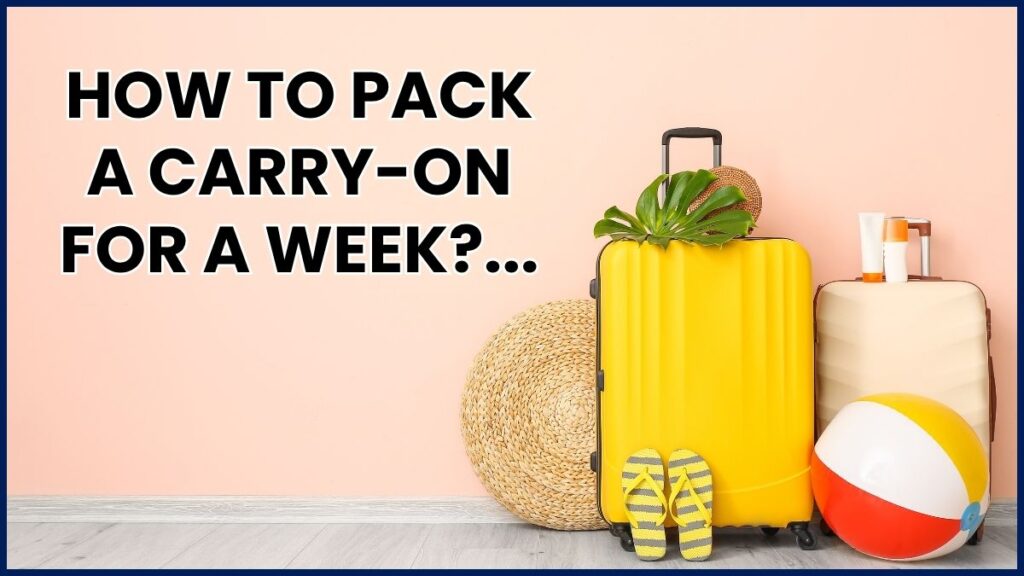Packing for a week with just a carry-on sounds impossible until you realize the problem isn’t space it’s indecision. Most people pack like they’re preparing for an apocalypse. The solution? Strategy, not size. Here’s how to do it right.
Build a Capsule Wardrobe That Actually Works
The idea is simple: every item you pack should match with two or three others. Choose neutral tones and classic styles that can be worn multiple ways. Instead of packing seven full outfits, pack a few key pieces that mix and match effortlessly. Think about fabrics that won’t wrinkle, tops that work for both day and night, and pants that go with everything. Stick to lightweight, quick-dry material if you can. You’ll feel like you have more without bringing more.
Think in Layers, Not Outfits
Rather than packing full outfits, think in layers. A tank top with a light cardigan can turn into evening wear. A t-shirt with a scarf and jacket is suddenly airport chic. The goal isn’t to have seven looks for seven days, but five pieces that give you fifteen combinations. If the weather’s unpredictable, layers save the day.
Packing Cubes Are Your Secret Weapon
If you’ve never used packing cubes, start now. They let you separate clothes by type or purpose, compress everything neatly, and avoid that dreaded suitcase explosion at your hotel. They also make it easier to find what you need without unpacking your entire bag. Rolling your clothes before putting them in cubes saves even more space—and keeps things wrinkle-free.

Downsize Every Single Toiletry
Nobody needs a full bottle of conditioner on vacation. Either buy travel-size toiletries or pour only what you need into TSA-approved containers. Bring only the essentials: a face wash, moisturizer, sunscreen, toothpaste, and deodorant. If you can switch to solids like shampoo bars or stick sunscreen even better. And always check your airline’s liquid limit. There’s nothing worse than watching your favorite serum get tossed at security.
Weigh Your Bag Then Weigh Your Choices
Weigh your carry-on before you leave the house. Most airlines cap it around 7 to 10 kg. If you’re over, don’t stuff the extras into your “personal item” and hope for the best. Reassess. That third pair of jeans? Probably not necessary. That hardcover novel? Download the ebook. Stick to the essentials, not the emotional support clutter.
Plan Your Outfits Like You Plan Your Itinerary
Before you even unzip your suitcase, know what you’re going to wear. If you’re gone for seven days, plan seven looks but make sure the pieces overlap. If you’re sightseeing all day and dining out at night, choose clothes that can handle both situations with a small change like adding a scarf or switching shoes. A little planning saves a lot of space.
Do Laundry Mid-Trip and Double Your Options
Packing for a week doesn’t mean bringing seven pairs of everything. If you’re staying somewhere with a sink and 10 minutes to spare, you can wash socks, underwear, and tees. A few detergent sheets take up almost no space and give you clean clothes halfway through your trip. Hang-dry overnight and you’re back in business.
Limit Yourself to Two Pairs of Shoes. Period.
Shoes are the worst offenders when it comes to weight and space. Wear the bulkiest pair on the plane ideally the one that works in most situations. Pack one other pair that’s lightweight, flexible, and matches most of your outfits. That’s it. Three pairs or more, and your carry-on starts feeling like checked baggage.
Fill the Gaps with Smart Extras
Once clothes and toiletries are set, use remaining space wisely. A power bank, a universal charger, a reusable tote bag, and a foldable laundry bag are small but make life easier. An eye mask and earplugs? Total lifesavers if you value sleep. These aren’t luxuries they’re efficient tools that make travel smoother.
Pack It. Lay It Out. Then Cut It Back.
Once everything’s packed, take five minutes to reassess. Lay it all out. See what you’re really taking. Then remove 25 to 30 percent. Yes, really. You won’t miss what you leave behind but you will appreciate how much easier it is to move, unpack, and repack when you’re on the road.
